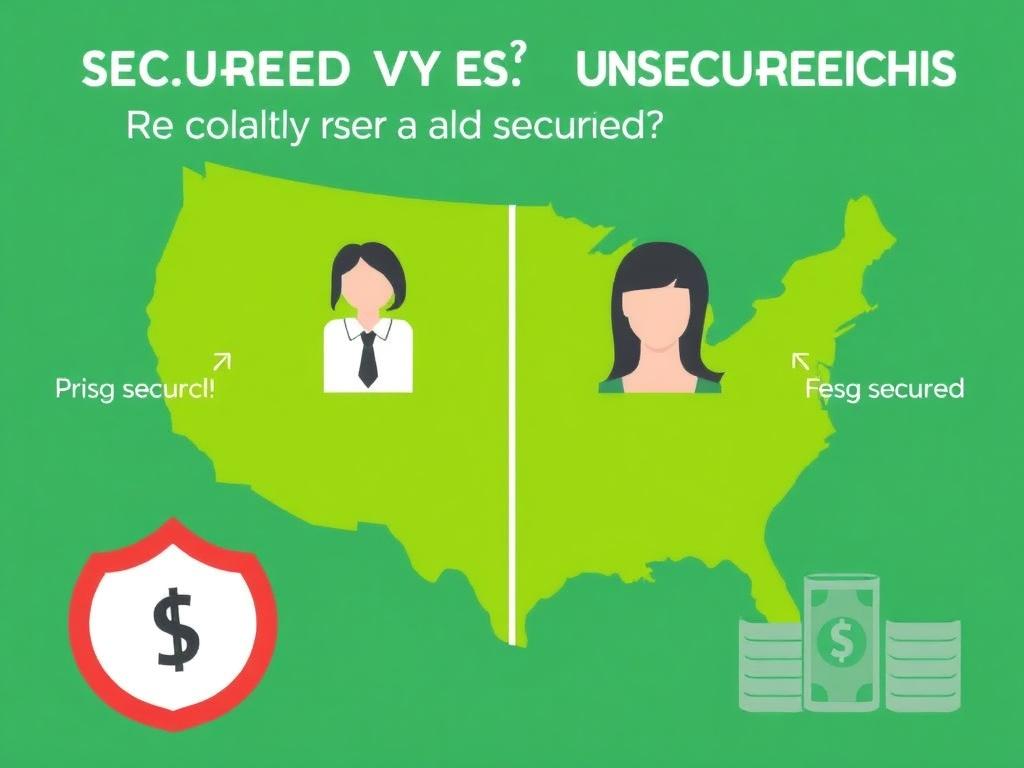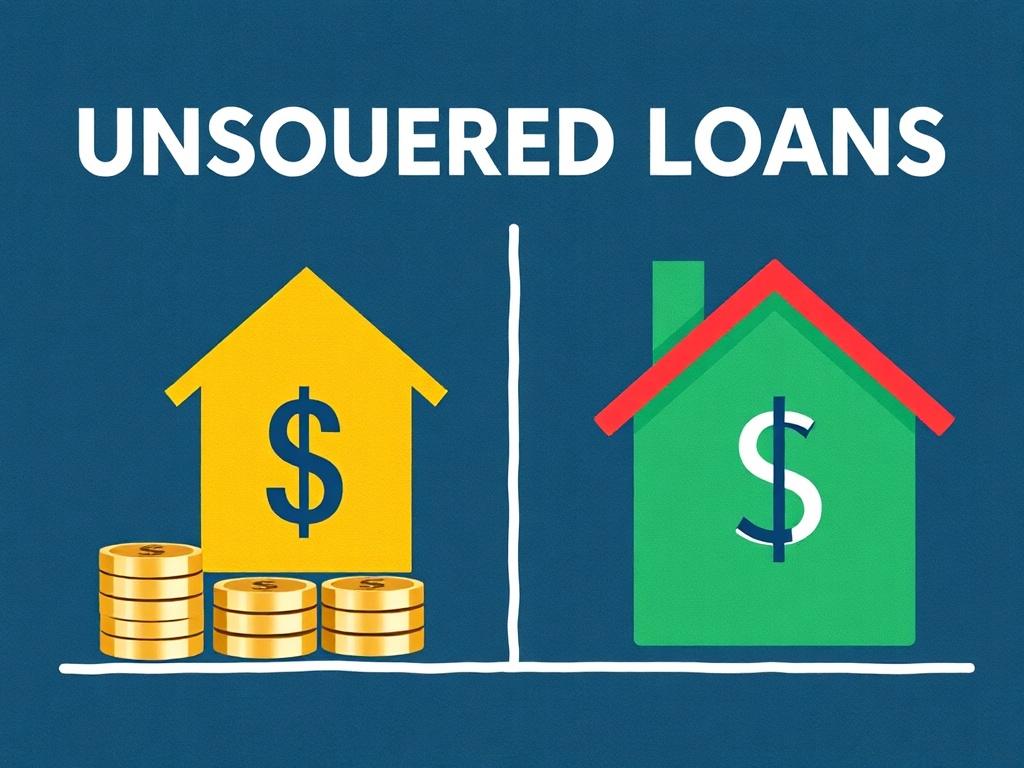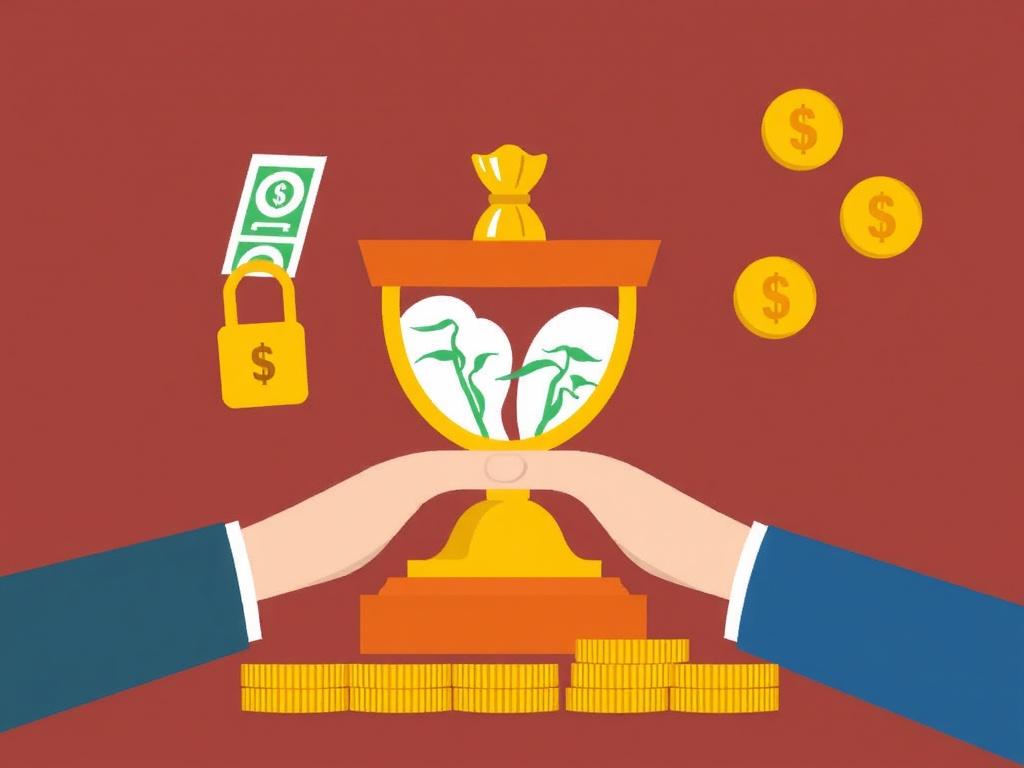SQLITE NOT INSTALLED
When it comes to borrowing money, understanding the differences between secured and unsecured loans is crucial. Whether you’re considering taking out a loan to buy a car, consolidate debt, or start a small business, knowing the pros and cons of each type helps you make informed financial decisions. In this article, we will explore what secured and unsecured loans are, how they work, and the key advantages and disadvantages of each. By the end, you’ll have a clear understanding of which type suits your needs best and why.
Содержание
What Are Secured Loans?

A secured loan is a type of borrowing that is backed by collateral—usually an asset such as a house, car, or savings account. The collateral serves as security for the lender, which means if the borrower fails to repay the loan, the lender can seize the asset to recover their money. Mortgages and auto loans are common examples of secured loans.
One of the main features of secured loans is that they often come with lower interest rates because the risk to the lender is reduced. The presence of collateral assures lenders that they will be able to recoup some or all of their losses if the borrower defaults. However, this also means there’s a higher level of risk for borrowers, since failing to keep up with payments might result in losing their valuable asset.
What Are Unsecured Loans?

On the other hand, unsecured loans don’t require collateral. These loans are granted purely based on the borrower’s creditworthiness, income, and overall financial profile. Examples include personal loans, credit cards, and student loans. Since there is no collateral backing the loan, lenders view these as riskier and, as a result, typically charge higher interest rates.
Borrowers benefit from unsecured loans because they don’t have to risk their assets to gain access to funds. However, approval can be more difficult to secure, especially if a borrower has a poor credit history. Unsecured loans also tend to have stricter eligibility criteria, and the loan amounts may be smaller compared to secured loans.
Key Differences Between Secured and Unsecured Loans
Understanding the difference between secured and unsecured loans goes beyond just whether collateral is involved. Several other factors define their uniqueness. The table below highlights the primary differences in a clear and concise manner:
| Feature | Secured Loan | Unsecured Loan |
|---|---|---|
| Collateral | Required (e.g., house, car) | Not required |
| Interest Rates | Generally lower | Generally higher |
| Loan Amount | Typically higher | Typically lower |
| Eligibility Requirements | Flexible, considering collateral value | Strict, based on credit score and income |
| Risk to Borrower | Asset loss if defaulted | No asset at risk, but credit damage |
| Loan Term | Generally longer | Typically shorter |
How Interest Rates Differ
Interest rates are one of the most critical factors for any borrower. Since secured loans reduce the lender’s risk by tying the loan to an asset, lenders often reward that with lower interest rates. This makes secured loans more affordable over the long term. In contrast, unsecured loans compensate for a higher risk with higher interest rates, which can make them more expensive, especially if payments extend over many years.
Loan Amount and Terms
Another significant difference is the amount you can borrow. Because a secured loan is backed by collateral, lenders are often willing to extend larger sums. This is useful for big-ticket purchases like homes or vehicles. Meanwhile, unsecured loans tend to cap the amount you can borrow due to the increased lending risk.
Loan terms in secured loans can also stretch out over longer periods—sometimes decades, as with mortgages. Unsecured loans usually have shorter repayment periods, which means higher monthly payments but less total interest over time.
Pros and Cons of Secured Loans
Like all financial products, secured loans come with their own set of advantages and disadvantages. Let’s break down the main pros and cons to help you decide if these loans might be right for you.
Pros of Secured Loans
- Lower interest rates: Thanks to collateral security, lenders offer lower rates than unsecured options.
- Higher borrowing amounts: You can borrow larger sums, useful for significant expenses.
- Longer repayment terms: Spreading payments over a longer timeline eases monthly budgets.
- More accessible for borrowers with weaker credit: Collateral can help get approval even if credit scores are average.
Cons of Secured Loans
- Risk of asset loss: If you default, the lender can seize your collateral, such as your home or car.
- Longer approval process: Verification of collateral can delay loan approval.
- Upfront costs: Secured loans sometimes involve fees related to asset appraisal or registration.
- Potential for over-borrowing: Because of high limits, borrowers might take on more debt than they can manage.
Pros and Cons of Unsecured Loans

Unsecured loans have become increasingly popular because of their accessibility and lack of collateral requirements. However, they are not without drawbacks. Understanding these can help you weigh the risks effectively.
Pros of Unsecured Loans
- No collateral required: You don’t risk your home, car, or savings if you default.
- Fast approval: Since there’s no asset to verify, the process tends to be quicker and simpler.
- Flexible use of funds: Personal unsecured loans can be spent on almost anything.
- Good for short-term borrowing: Ideal when you need smaller amounts temporarily.
Cons of Unsecured Loans
- Higher interest rates: Lenders charge more to offset greater risk.
- Stricter qualifications: Bad credit or unstable income may disqualify many borrowers.
- Lower borrowing limits: You usually can’t borrow as much as with secured loans.
- Potential credit damage: Defaulting will severely affect your credit score and future borrowing ability.
When to Choose a Secured Loan
Deciding when to opt for a secured loan depends on your financial situation, what you need to borrow for, and your risk tolerance. Secured loans are generally a better choice if:
- You want to borrow a large sum, such as buying a home or vehicle.
- You’re comfortable pledging an asset as collateral and making monthly payments over time.
- You’re looking to secure the lowest possible interest rates to save money in the long run.
- Your credit score needs a boost—using collateral can help you qualify.
Further, if you already have valuable assets and a stable income, a secured loan can be a strategic way to harness your equity responsibly.
When to Opt for an Unsecured Loan
If you’re borrowing a modest amount or want to avoid risking your assets, unsecured loans may be better. Consider an unsecured loan if:
- You don’t own assets worth pledging or don’t want to risk them.
- You need quick access to funds with minimal paperwork.
- You’re borrowing for flexible uses like consolidating debt or covering medical expenses.
- Your loan needs are short-term or temporary.
However, if your credit score is less than ideal, securing an unsecured loan might be challenging, so you should explore all your options.
How to Compare Offers: Top Tips
Evaluating loan offers can feel overwhelming, but focusing on a few key factors can streamline your choice:
- Compare interest rates: Lower interest saves you money over time.
- Understand fees and penalties: Look for application fees, early repayment penalties, and other costs.
- Check repayment terms: Longer terms reduce monthly payments but might increase total cost.
- Assess your ability to repay: Be realistic about monthly budgets to avoid default.
- Review lender reputation: Choose lenders with transparent terms and good customer service.
Creating a side-by-side comparison chart is an effective way to visualize differences and make the best decision.
Sample Comparison Chart
| Loan Type | Typical Interest Rate | Collateral Required | Typical Loan Amount | Approval Time |
|---|---|---|---|---|
| Secured Loan | 3% – 8% | Yes | $10,000 – $500,000+ | Several days to weeks |
| Unsecured Loan | 8% – 25%+ | No | $1,000 – $50,000 | Same day to a few days |
Impact on Credit and Default Risks
Both secured and unsecured loans affect your credit report and score differently—with implications to consider carefully.
With secured loans, consistent repayments can build excellent credit, while missed payments put your collateral and credit score at risk. Defaulting on secured loans usually results in repossession or foreclosure but also damages your credit.
Unsecured loans offer less risk in terms of losing assets but carry a higher chance of credit damage if you fail to pay. Since there’s no collateral, lenders rely wholly on your creditworthiness and will report delinquencies. Repeated defaults can lead to collection actions that harm your ability to get loans or credit cards later.
Tips to Stay in Control
- Create a realistic budget that includes monthly repayments.
- Prioritize paying unsecured loans on time due to their higher interest rates.
- Maintain open communication with lenders if you foresee payment difficulties—they may offer temporary relief options.
- Consider refinancing if rates drop or your financial situation improves.
Specialized Secured and Unsecured Loan Types
Sometimes, understanding the loan type includes recognizing specific variants within secured and unsecured categories. Here are some specialized loan types you might encounter:
Common Secured Loan Types
- Home Equity Loan: Borrowing against the value of your home.
- Auto Loan: Typically for purchasing vehicles, secured by the car itself.
- Secured Personal Loan: Backed by savings accounts or certificates of deposit.
- Mortgage Loan: Long-term loans secured by residential property.
Common Unsecured Loan Types
- Personal Loan: Versatile loans that can be used for many purposes.
- Credit Cards: Revolving credit without collateral.
- Student Loans: Often unsecured, sometimes backed by government guarantees.
- Unsecured Lines of Credit: Flexible borrowing without collateral, up to a certain limit.
Final Thoughts on Secured vs. Unsecured Loans: Pros and Cons
Choosing between secured and unsecured loans depends largely on your financial goals, risk tolerance, and personal circumstances. Secured loans offer the advantage of lower interest rates and higher borrowing limits but come with the risk of losing valuable assets if you fail to repay. Unsecured loans provide quick access to funds without risking your property but tend to have higher interest rates and stricter eligibility standards.
Before making any decisions, carefully assess your ability to repay, the purpose of the loan, and how much risk you are willing to take. Remember, both loan types can be powerful tools for managing finances if used responsibly. By weighing the pros and cons detailed here, you can confidently navigate the borrowing landscape and select the loan that best aligns with your needs.
Опубликовано: 23 July 2025 Кредитрон – блог о кредитах, финансах и прочих реверансах
Кредитрон – блог о кредитах, финансах и прочих реверансах

